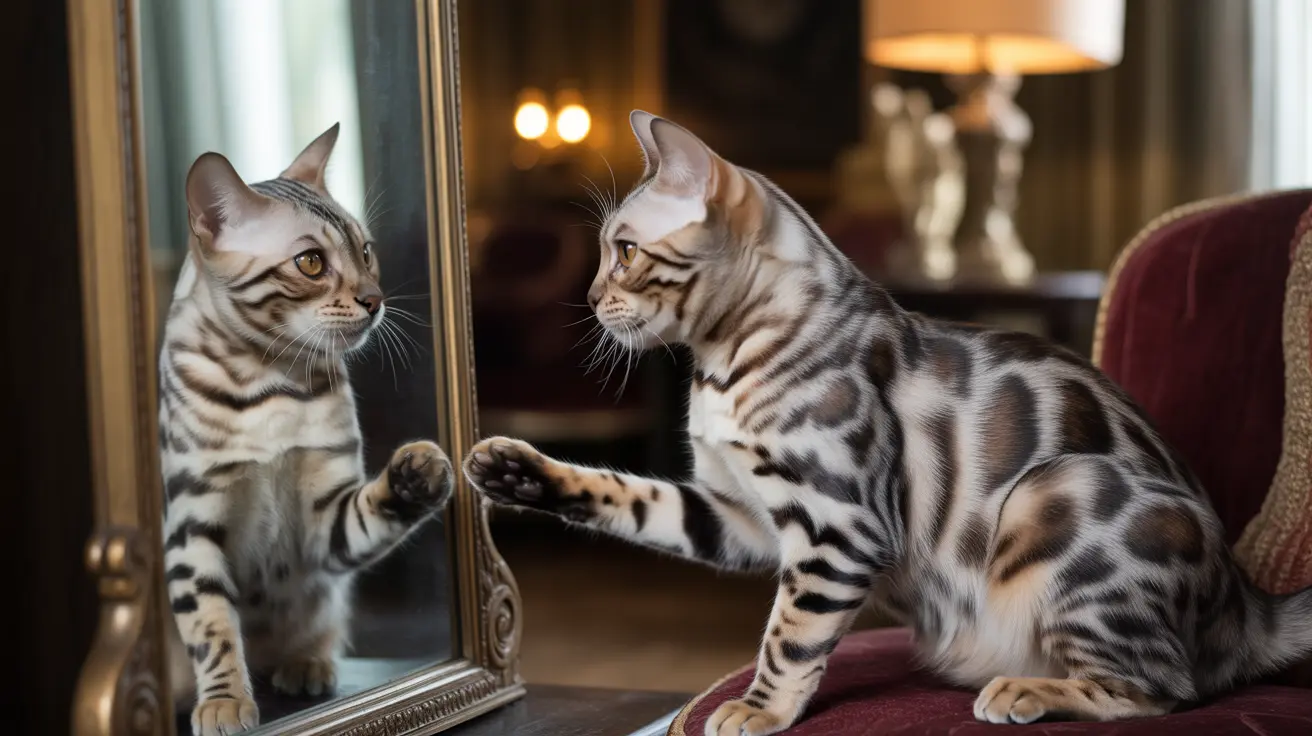If you've ever caught your cat pawing at their reflection, you're not alone. Mirror scratching is a common feline behavior that often leaves pet owners puzzled and concerned. While this habit might seem strange to us, there are several fascinating reasons why cats engage in this peculiar activity.
Understanding why your cat scratches mirrors can help you better address their needs and ensure both your pet's safety and the protection of your home furnishings. Let's explore the science behind this behavior and learn how to manage it effectively.
The Science Behind Mirror Scratching Behavior
Cats are naturally curious creatures, and their interaction with mirrors stems from both instinct and perception. Unlike humans, cats don't recognize their reflection as themselves. Instead, they often perceive the mirror image as another cat, which triggers various natural responses.
Research shows that cats fail the "mirror test," a scientific experiment designed to test self-awareness in animals. This explains why your feline friend might react to their reflection as if encountering a strange cat in their territory.
Common Reasons for Mirror Scratching
Territory Marking
Cats have scent glands in their paws, and scratching is one way they mark their territory. When they encounter their reflection, they may scratch the mirror to leave their scent, essentially trying to claim dominance over the "other cat" they perceive.
Curiosity and Investigation
Many cats scratch mirrors simply out of curiosity. The smooth, reflective surface presents an unusual texture that they want to explore with their paws, especially if they notice movement or light reflections.
Social Interaction Attempts
Some cats scratch mirrors as an attempt to interact with what they perceive as another cat. This behavior can be especially common in single-cat households where the pet might be seeking feline companionship.
Potential Risks and Safety Concerns
While mirror scratching is usually harmless, there are some risks to consider. Aggressive scratching could damage your cat's claws or, in rare cases, lead to injury if the mirror isn't properly secured. Additionally, excessive focus on mirrors might indicate underlying anxiety or stress.
How to Manage Mirror Scratching
Provide Alternative Scratching Options
Install appropriate scratching posts near problematic mirrors, offering your cat a more suitable outlet for their natural scratching instincts. Choose posts with varying textures and heights to keep your cat interested.
Environmental Enrichment
Ensure your cat has plenty of environmental enrichment through toys, climbing spaces, and interactive play sessions. A well-stimulated cat is less likely to develop problematic behaviors like excessive mirror scratching.
Positive Redirection
When you notice your cat scratching the mirror, gently redirect their attention to appropriate scratching surfaces. Use positive reinforcement by rewarding them when they use their scratching post instead.
Frequently Asked Questions
Why does my cat scratch the mirror and what does it mean?
Your cat likely scratches the mirror because they don't recognize their reflection and may perceive it as another cat. This behavior can also be driven by natural territorial marking instincts or simple curiosity about the reflective surface.
Do cats recognize themselves in mirrors or do they see another cat?
No, cats don't recognize themselves in mirrors. Scientific studies show that cats lack self-recognition abilities and typically interpret their reflection as another cat or an unfamiliar object in their environment.
Is it harmful if my cat keeps scratching the mirror?
While generally not harmful, excessive mirror scratching could potentially damage your cat's claws or lead to injury if the mirror isn't secure. It's important to provide alternative scratching options and monitor the behavior's intensity.
How can I stop my cat from scratching mirrors without stressing them out?
The best approach is to provide appropriate scratching alternatives, ensure enough environmental enrichment, and use positive reinforcement to redirect the behavior. Never punish your cat for mirror scratching, as this can increase stress and anxiety.
Why does my cat seem obsessed or anxious around mirrors sometimes?
Some cats may become fixated on mirrors due to territorial instincts, anxiety, or lack of environmental stimulation. If your cat seems unusually stressed around mirrors, consider consulting with a veterinarian to rule out underlying issues.
Understanding and appropriately managing your cat's mirror-scratching behavior can help maintain a harmonious household while ensuring your pet's well-being. Remember that each cat is unique, and what works for one may not work for another. With patience and consistent positive reinforcement, you can help your cat develop better habits while maintaining their natural instincts in a safe way.






